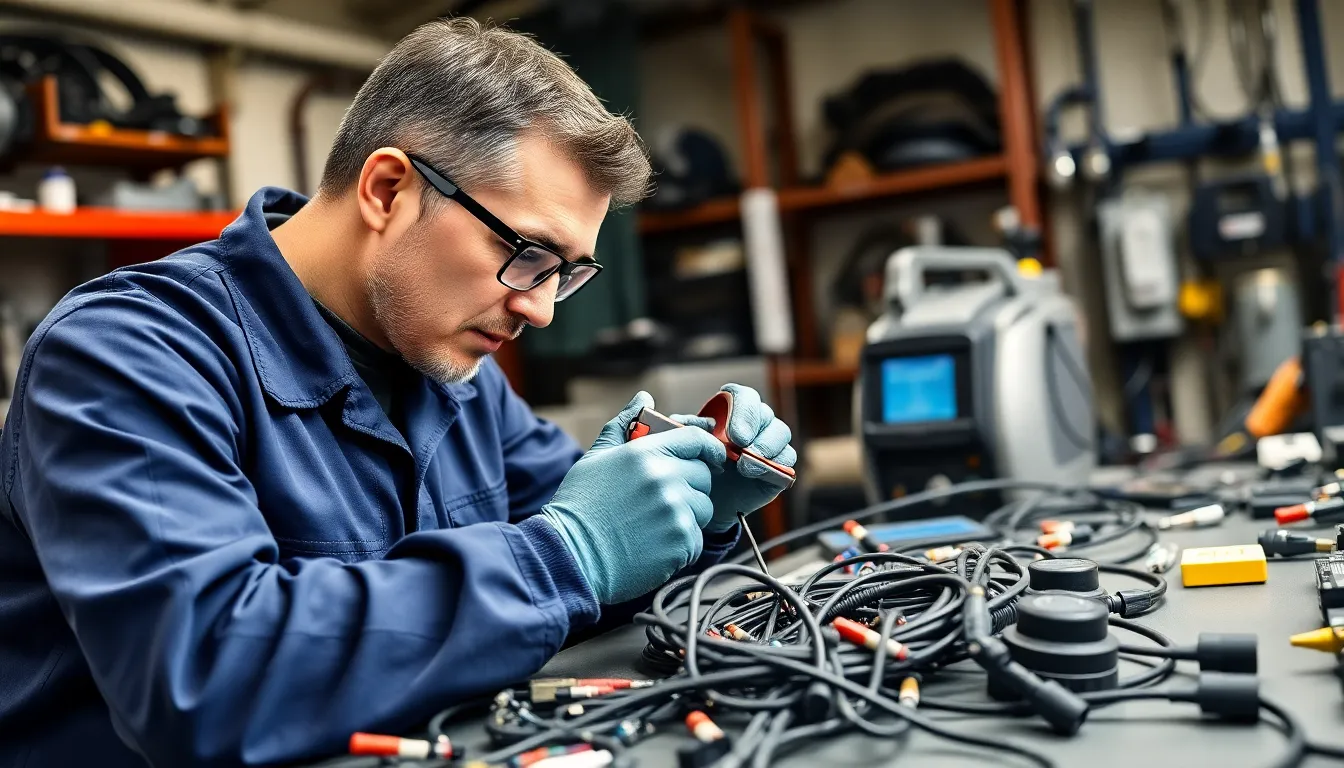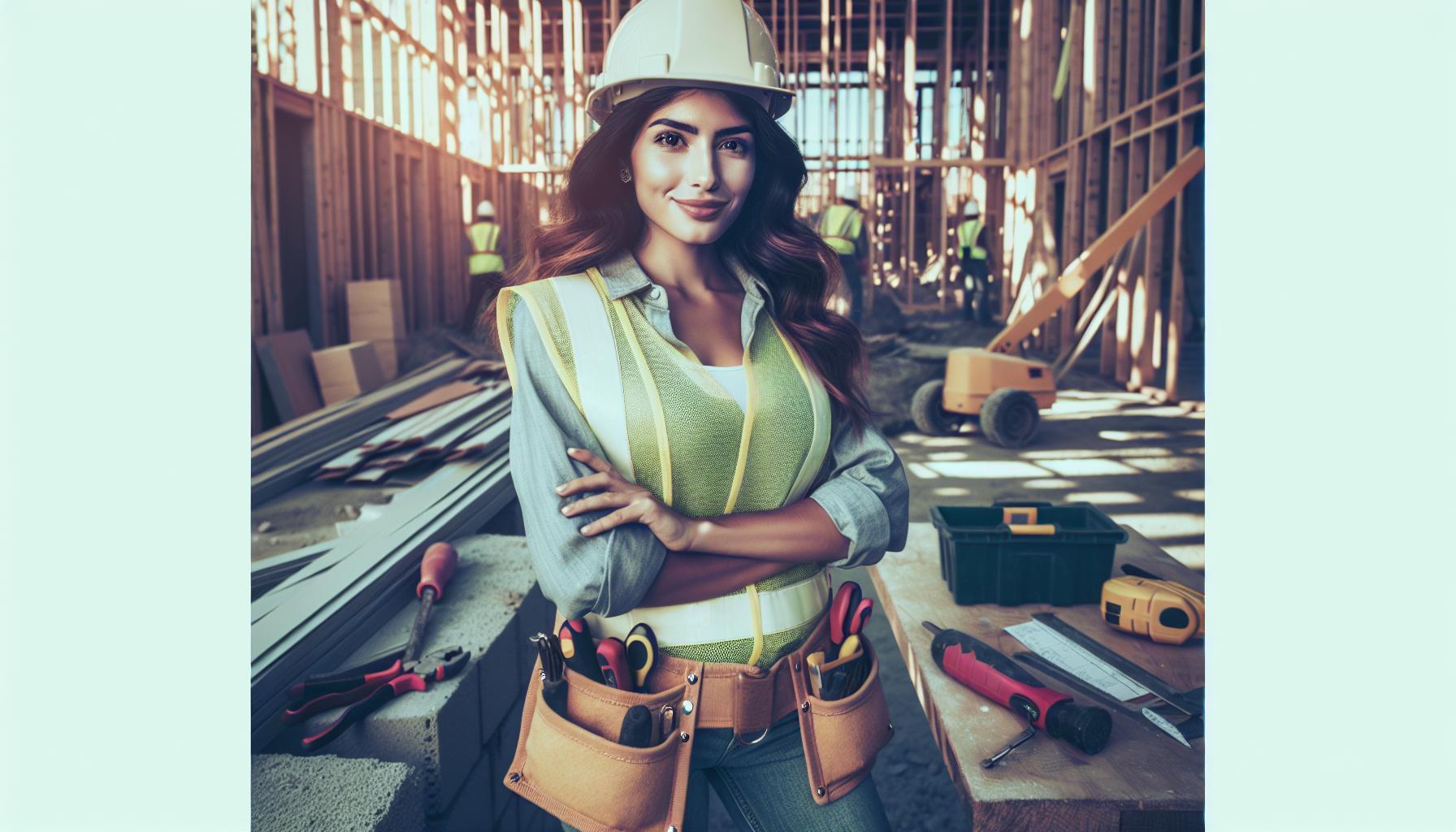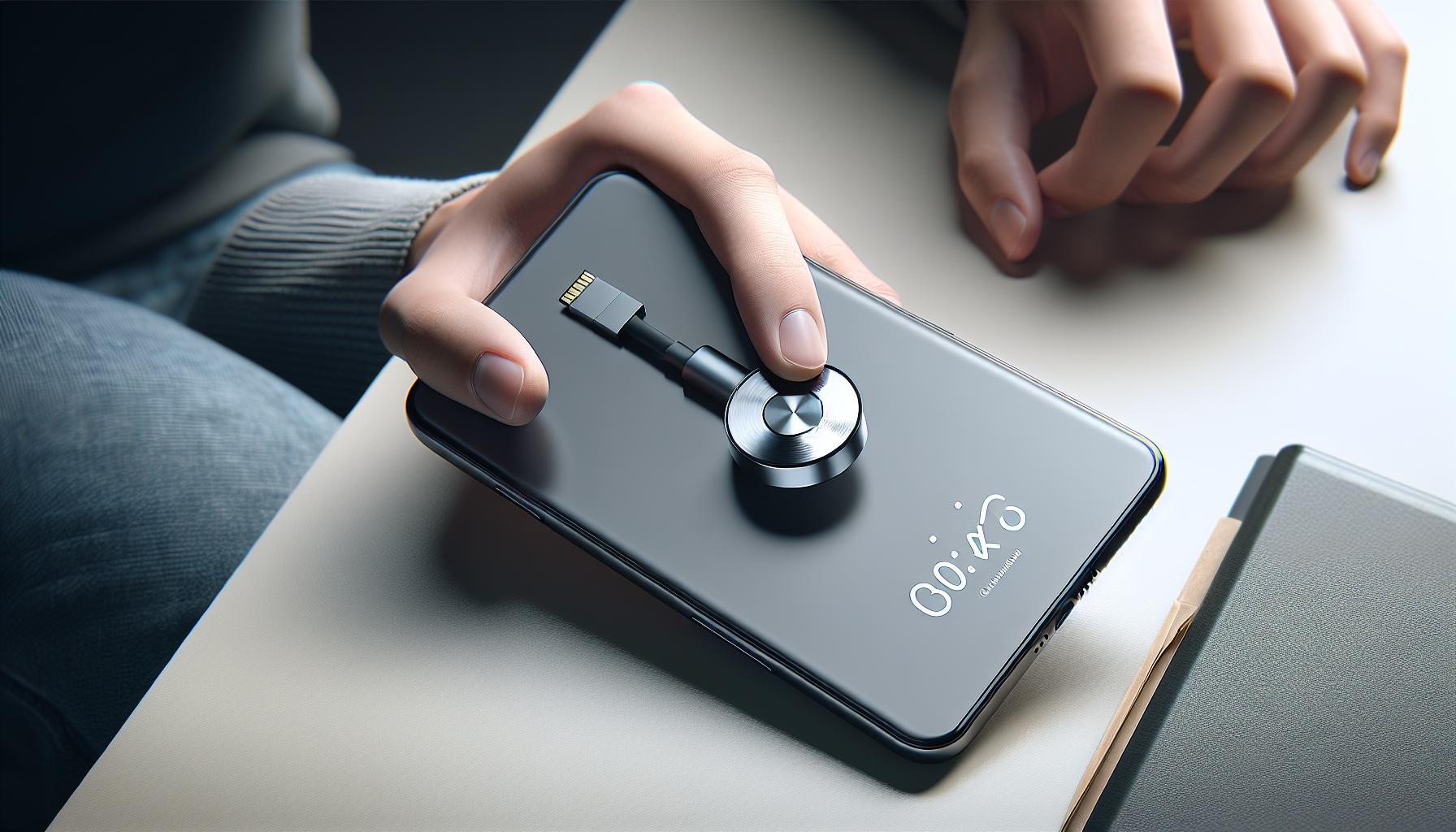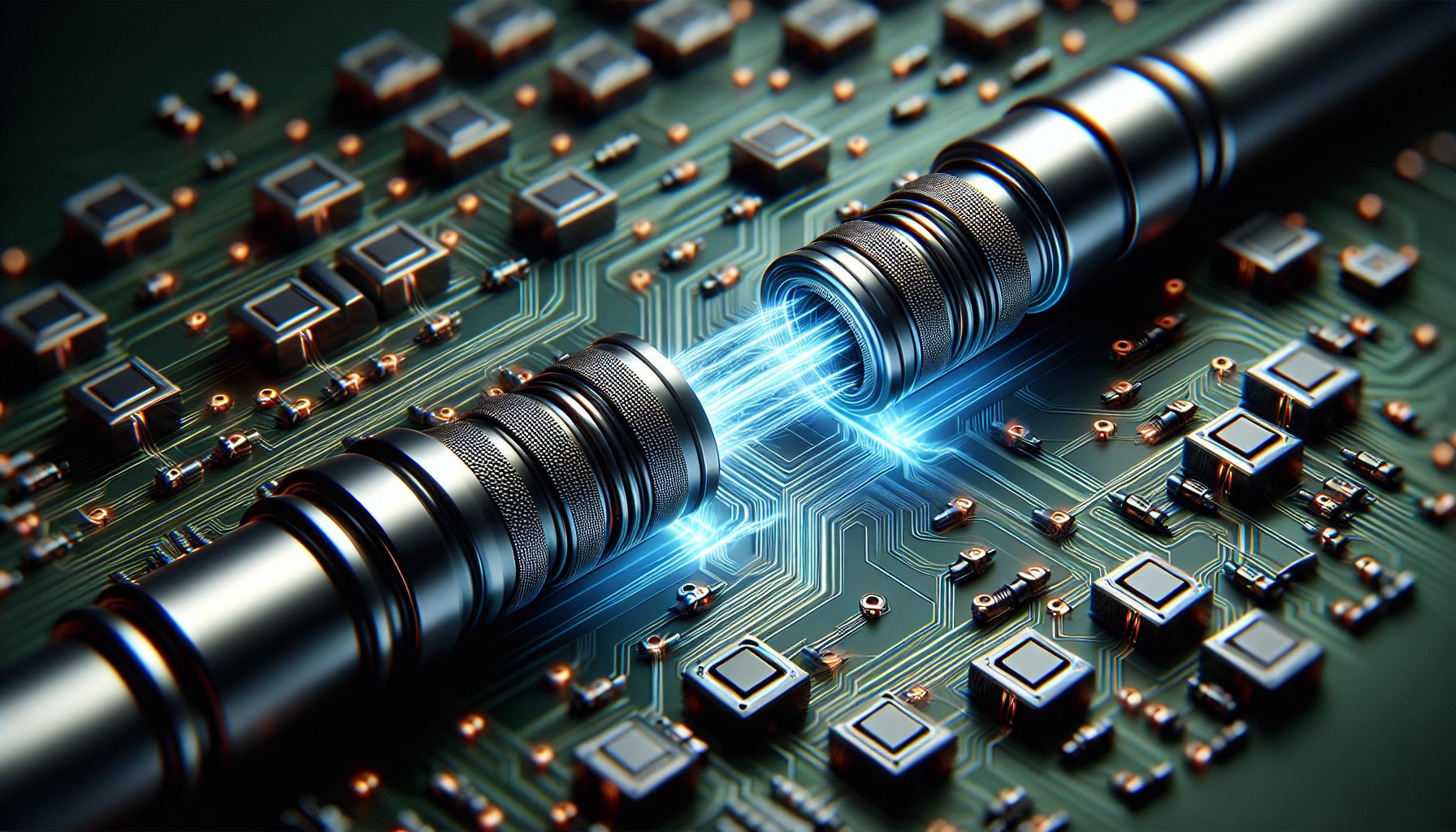Melbourne’s industrial and commercial sectors rely on air compressors Melbourne for applications ranging from mining operations to automotive manufacturing and food processing. Local suppliers like Compressor Systems provide installation, maintenance, and compliance services for leading brands including Atlas Copco and Kaeser, ensuring systems meet Australian safety standards whilst delivering energy-efficient compressed air solutions tailored to specific industry requirements.
Overview of Air Compressors in Melbourne
Air compressors in Melbourne support applications in mining, automotive manufacturing, food processing, and industrial operations. Models designed for Melbourne’s climate deliver steady performance in workshops, factories, and mobile units. Rotary screw air compressors, like those used by automotive manufacturers, enable continuous operation for high-demand sites. Reciprocating air compressors serve small workshops and mobile service vans, supplying consistent pressure for pneumatic tools.
Local suppliers in Melbourne provide installation, routine servicing, and breakdown repairs, maintaining uptime for industrial users. Brands distributed locally, including Atlas Copco and Kaeser, meet Safety Standards AS1210 for pressure vessels. System integration with air dryers and filtration supports food-grade compressed air for food processors meeting HACCP requirements.
Energy efficiency upgrades, including variable speed drives and leak detection monitoring, cut operating costs for business users. Compressor Systems (Perth, WA) consults on Melbourne projects, optimising high-demand systems, replacing legacy compressors, and configuring remote monitoring for multi-site industrial operators. Scheduled maintenance packages align with plant shutdowns and industry compliance audits. Melbourne’s air compressor specialists design, install, and upgrade compressed air solutions for safe, reliable operation across production sectors.
Types of Air Compressors Available
Air compressors in Melbourne and Perth cover a spectrum of needs for workshops, manufacturing, and heavy industry. Each type serves a unique function, supporting onsite maintenance, energy efficiency, and compliance with safety standards.
Portable Air Compressors
Portable air compressors deliver flexible compressed air supply on building sites, auto workshops, or for mobile repairs in Melbourne and Perth. These compressors include models such as 2- to 20-litre direct drive units and compact petrol-driven machines. Site managers often select portable air compressors for air tool operation and spot repairs where mains power’s unavailable. In food processing or mining, technicians use mobile units for short-term shutdowns and service tasks. Compressor Systems provides transportable solutions with lightweight construction and acoustic control, supporting maintenance teams needing frequent relocation. Safety guards and pressure relief valves are standard, complying with AS 1210 and WA pressure vessel regulations.
Industrial Air Compressors
Industrial air compressors support heavy-duty tasks in mining, automotive manufacture, and high-capacity assembly lines. Rotary screw models, commonly installed in Western Australia and Victoria, sustain continuous compressed air delivery for production lines, bulk pneumatic transfer, and climate control. Facility managers favour these systems, such as Atlas Copco and Kaeser units ranging from 7.5kW to above 300kW, for energy efficiency and low lifecycle cost. Installation and upgrades by specialist providers, including Compressor Systems in Perth, optimise pressure delivery and system redundancy. Remote monitoring and filter change schedules support preventative maintenance, ensuring minimal unplanned downtime in regulated industries.
Oil-Free vs Oil-Lubricated Models
Compressed air quality directly relates to oil presence, impacting food, pharmaceutical, and painting sectors. Oil-free air compressors, fitted with Teflon-coated cylinders or advanced scroll and screw mechanisms, supply clean air where contamination would breach HACCP or ISO 8573-1:2010 air purity standards. Oil-lubricated models, more common in general manufacturing and metalwork, rely on continuous oil injection for moving part life and heat removal, delivering more robust output under prolonged load. When selecting between these models, maintenance teams consider compressor duty cycles, filter requirements, and industry regulations. Compressor Systems Perth and Melbourne specialists assist with on-site assessments to match air purity needs and service intervals.
Key Applications of Air Compressors in Melbourne
Air compressors in Melbourne enable critical functions in mining, automotive manufacturing, food processing, and general manufacturing. Mining operations use rotary screw compressors and high-capacity air tools for drilling, ventilation, and pneumatic machinery. Automotive manufacturers rely on compressed air for spray painting, body assembly, and inflating tyres. Food processors select oil-free air compressors to achieve high air purity standards needed for packaging, mixing, and pneumatic automation, supported by brands like Atlas Copco and Kaeser.
Industrial facilities optimise compressed air systems to maintain consistent pressure for conveyors, robotics, and cutting tools. Portable air compressors serve building sites and mobile service teams, offering rapid setup and efficient operation under Melbourne’s and Perth’s weather variations. Maintenance and repair services, provided by Compressor Systems in both locations, include pressure vessel checks, scheduled maintenance, and emergency repairs, helping meet safety codes (Australian Standards AS 1210).
Regular system inspections and remote monitoring deliver energy efficiency gains and operational reliability. System specialists perform on-site assessments, recommend upgrades, and install filtration solutions to match specific production air quality requirements. These optimisation measures lower downtime and support safe, cost-effective operations across mining, automotive, food, and manufacturing sectors in Melbourne and Perth.
How to Choose the Right Air Compressor
Choosing the right air compressor in Melbourne or Perth depends on the required application, duty cycle, and available services for installation and ongoing maintenance. Matching specifications to the precise task increases system efficiency and longevity.
Assessing Your Needs
Assess application type, airflow requirements, and available space before selecting a compressed air system. Industrial users, such as those in mining or automotive sectors, often need rotary screw compressors exceeding 100 CFM for continuous operation. Workshops or smaller manufacturing lines may work efficiently with reciprocating compressors rated between 5 and 25 CFM for intermittent tasks. Factor in site conditions including ambient temperature, humidity, and power supply compatibility. Perth sites with frequent outdoor use often favour portable models for mobility on building or mining sites. Always confirm compliance with Australian safety regulations and pressure vessel codes prior to purchase.
Important Features to Consider
Check compressor specifications that match the task and Australian climate. Review the maximum pressure (PSI) to ensure the system operates all required air tools or production equipment. Choose oil-free models for sensitive settings such as food or pharmaceutical processing, as air purity standards remain strict in these industries. Select units with integrated filtration if clean air is critical. Prefer compressors with energy-efficient motors (IE3 or above) and variable speed drives to reduce running costs in industrial facilities. Melbourne and Perth service providers offer preventative maintenance programmes to support system reliability, including pressure vessel checks and remote monitoring. Reliable after-sales service and local parts supply ensure minimal downtime when repairs become necessary.
Top Brands and Suppliers in Melbourne
Melbourne suppliers stock leading air compressor brands like Atlas Copco, Kaeser, Sullair and Ingersoll Rand, each offering proven products for industrial, automotive and food processing sectors. Atlas Copco provides rotary screw air compressors with integrated energy-saving controls, common in large manufacturing and mining operations. Kaeser systems supply oil-free compressors meeting food and pharmaceutical air quality standards, suitable for Melbourne and Perth processing plants. Sullair rotary screw units support mining sites, delivering high pressure and continuous output with on-site service support. Ingersoll Rand supplies both stationary and portable units, with models optimised for both workshop settings and construction sites.
Local distributors, such as Compressor Systems, deliver installation, pressure vessel compliance checks and scheduled maintenance across Melbourne and WA, supporting compliance with Australian Standard AS 1210. They maintain genuine parts inventories and offer emergency repair response times under 24 hours. Mobile service fleets reach remote mining or automotive locations for diagnostics and on-the-spot repairs. Energy audits and system optimisation services help reduce compressed air energy costs by up to 30%, as recommended by the Australian Government’s Energy Efficiency Exchange. Suppliers also provide reliability upgrades, including integrated filtration and dew point controls, serving temperature-sensitive industries like food production and pharmaceutical packaging.
Maintenance Tips for Longevity
Routine checks extend the lifespan of air compressors in Melbourne and reduce emergency downtime. Inspect filters, drains, hoses, and oil levels monthly for early detection of wear in mining, automotive, and manufacturing sites. Replace filters quarterly to protect critical components and maintain airflow, as seen in automotive manufacturing and food processing plants.
Monitor pressure vessel integrity to meet statutory safety requirements. Apply ultrasonic thickness testing annually in compliance with AS 3788:2006, with mining and heavy industrial compressors needing stricter checks due to high duty cycles. Compressor Systems in Perth conducts certified inspections and pressure vessel testing, ensuring full compliance for Western Australian operations.
Clean condensate drains weekly to prevent moisture buildup, especially with rotary screw compressors used in food processing and temperature-sensitive manufacturing. Empty and inspect receiver tanks for internal corrosion and fit auto-drains where manual intervention isn’t practical.
Lubricate moving parts according to the manufacturer’s schedules. Oil-lubricated compressors, such as those supporting mining or high-volume workshops, reach optimal efficiency with clean oil and scheduled top-ups or changes. Maintain correct belt tension and alignment every six months to prevent breakdowns in reciprocating units.
Contract planned servicing with approved providers like Compressor Systems to ensure warranty compliance and skilled repairs. Their technicians offer routine maintenance, emergency call-outs, and part upgrades for sectors across Melbourne and Perth. Regular air-end inspections, motor checks, and heat exchanger cleans support energy-efficient operation and reduce lifetime costs, meeting both safety and productivity targets.
Conclusion
Choosing the right air compressor in Melbourne is a decision that impacts productivity, safety, and long-term costs across many industries. With expert guidance from local suppliers and access to trusted brands, businesses and DIY users alike can find tailored solutions that suit their unique requirements.
Prioritising regular maintenance and working with knowledgeable service providers ensures that air compressors continue to deliver reliable performance while meeting Australian safety standards. Investing in quality equipment and ongoing support helps keep operations running smoothly and efficiently in any Melbourne setting.
Frequently Asked Questions
What should I consider when choosing an air compressor in Melbourne or Perth?
When choosing an air compressor, consider your application type, required airflow (CFM), available space, site conditions, and the need for energy-efficient features. Ensure compliance with Australian safety regulations and availability of reliable after-sales service from local suppliers.
What are the main types of air compressors available?
The main types of air compressors are rotary screw, reciprocating (piston), oil-free, oil-lubricated, portable, and industrial models. Each type suits different environments, from workshops to heavy industrial operations.
Which brands are recommended for air compressors in Melbourne?
Top brands include Atlas Copco, Kaeser, Sullair, and Ingersoll Rand. These brands are known for their reliability, compliance with safety standards, and suitability for Melbourne’s diverse industrial needs.
Why is regular maintenance of air compressors important?
Regular maintenance prevents breakdowns, ensures safety, prolongs equipment lifespan, and maintains efficient operation. It also helps comply with Australian safety regulations, especially in industries such as mining and food processing.
How do I know if I need an oil-free air compressor?
You need an oil-free air compressor if your application requires high air quality, such as in food processing, pharmaceuticals, or painting. Oil-free models prevent contamination and meet stringent industry standards.
What industries in Melbourne commonly use air compressors?
Common industries include mining, automotive manufacturing, food processing, and general manufacturing. Each sector may need different types of compressors based on their operations.
What services do local air compressor suppliers in Melbourne offer?
Local suppliers provide installation, maintenance, emergency repairs, compliance checks, energy audits, and system optimisation. They also offer spare parts and support for warranty claims.
How can I reduce the running costs of my air compressor?
Choose energy-efficient models, schedule routine maintenance, replace filters regularly, and ensure proper system optimisation. Consider conducting energy audits to identify further savings.
What is the difference between rotary screw and reciprocating air compressors?
Rotary screw compressors are ideal for continuous, high-demand applications, offering greater efficiency for large operations. Reciprocating compressors suit smaller workshops with intermittent use and lower airflow needs.
How often should air compressor maintenance be performed?
Inspect filters, drains, and oil levels monthly; replace filters quarterly; perform annual ultrasonic thickness testing, and follow the manufacturer’s maintenance schedule. Planned servicing by approved providers ensures optimal performance and compliance.














